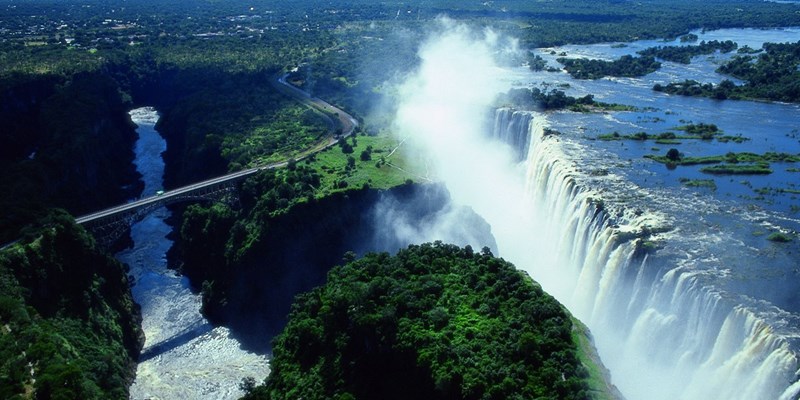Crossing the Zim-Zam border

The introduction of a single visa for multiple entry to both Zimbabwe and Zambia should have been a boost to tourism in the region, allowing many a full experience of the Victoria Falls with viewing from both sides. But administrative problems have hampered the project since its roll-out in December 2016.
The joint visa is a pilot project of the Kavango Zambezi Transfrontier Conservation Area (KAZA TFCA), which ultimately visualises a common entry document for the five southern African countries bordering on the Caprivi-Chobe-Victoria Fall area – Angola, Botswana, Namibia, Zambia and Zimbabwe.
The KAZA univisa costs US$50, is valid up to 30 days as long as the holder remains within Zambia and Zimbabwe, and also covers Botswana day-trips through the Kazungula borders. But due to an erratic supply of stickers denoting the visa, border officials have run out of stock (usually at the busiest travel times), leaving visitors to purchase separate single- and double-entry visas.
Imran Changezi, GM of Minor Zambia, says the convenience of the univisa is a plus. “Travellers these days look for ease of access and much of their itinerary depends on how easy it is to travel into and out of a destination without much hassle. Any arrangement that offers the peace of mind in terms of mobility is greatly appreciated.”
Says Tanya Stephens, GM of the Protea Hotel by Marriott Livingstone: “The univisa does benefit our tourists and is beneficial to Victoria Falls as a region. It is hopefully one step closer to getting visa fees waived and promoting travel within the entire region, making it easier and more efficient for our tourists. The sticker shortages are hopefully a thing of the past and may the lesson have been learned by our officials on the long-term implications of bad planning in the tourism industry.”
Ross Kennedy, CEO of Africa Albida Tourism, acknowledges that the univisa is significant to all his key source markets and is a definite positive towards user-friendliness. The sticker shortage, he believes, “certainly seems to be a thing of the past as both Zimbabwe and Zambia fully understand their importance now”.
Bushtracks Africa Zimbabwe’s Simon Teede says both countries are at fault. Further, the lack of personnel at immigration in Zimbabwe creates huge delays, with queueing for up to three hours.
Views on vantage points:
“The Zimbabwean side is more spectacular because it always has more water,” says Hara Jackson, group sales manager for Legacy Hotels.
In terms of timing, Ross Kennedy, ceo of Africa Albida Tourism says between the drier, low-water months of late September to mid-December, there is usually little to no flow over the Zambian side of the Falls. “It’s essential visitors know this and make time to cross from Zambia to Zimbabwe even for just a half day,” he says, adding that the best time to see the Falls is between late March and July.
“Both sides offer a unique experience,” says Liane Venter, sales and marketing manager at AfricaStay. She points out that when the waters are low travellers are able to experience the ‘notorious’ Devils Pool from the Zambian side.
Zambia allows visitors to appreciate the Falls from an entirely different angle, agrees Glenn Stutchbury, CEO of Cresta Hotels. “We always recommend guests see both sides of the Falls to fully appreciate the World Heritage Site.”
Glenn says if travellers are staying on the Zimbabwe side, the Falls are within walking distances of most hotels and lodges. Cresta Sprayview for example, is 1.4km from the entrance to the Falls and provides a free shuttle for guests who might want a lift instead of walking.
Travellers can be significantly inconvenienced at the border controls if they don’t have a tour operator to fast track the experience, notes Colin Fryer, owner of Centre Stage Travel. He says there are often big trucks passing through the border and travellers have been known to be delayed for up to three hours.
source: Tourism Update




